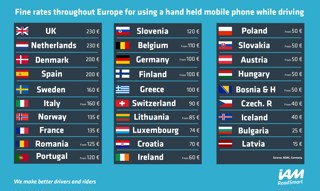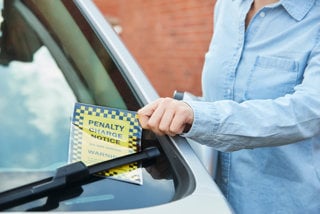A camera that can catch drivers from up to 1km away who speed, tailgate, use handheld mobile phones or do not wear seatbelts, is supported by the majority of drivers.
Six in 10 drivers (59%) told the RAC that they supported police using long-range mobile cameras to enforce motoring offences.
The question was put to 2,201 members of the RAC Opinion Panel on the back of Gloucestershire Constabulary trialling the camera.
In total, only 28% were against the camera being used by all UK forces, with 13% not expressing an opinion. When analysing the data by gender, far more women than men were in favour (69% versus 50%). Older female drivers over the age of 65 were the most supportive, with 83% of those surveyed saying they should be introduced everywhere.
RAC road safety spokesperson, Pete Williams, said: “While speed enforcement can split driver opinion, the findings of our survey show widespread support for the new long lens of the law. This is perhaps because drivers are used to speeding being enforced by a variety of means and are frustrated a similar focus is not employed to catch those they regularly see committing other motoring offences.”
The top reason listed for such a long-range camera being used was that it would be good to catch people illegally using a handheld phone as 78% claimed to see too many drivers breaking the law in this way.
A similar percentage (77%) said it would be good for enforcing driving offences such as tailgating, middle lane hogging and not wearing seatbelts.
Seven in 10 (71%) felt a long-range camera would make the country’s roads safer while half (50%) believed it would lead to more drivers being caught speeding as many manage to spot traditional, single-location fixed cameras – or even normal mobile cameras – in advance and slow down.
Among the 28% who were against such cameras being used by all forces to catch drivers for a variety of motoring offences, the majority (68%) said they had no deterrent value in contrast to speed camera vans and police officers with handheld cameras which they believe are a visible deterrent.
Forty-four per cent, however, felt the camera’s use was unfair as drivers would not be able to see it in advance. Just over a third (35%) were concerned about privacy issues and one in 10 (13%) thought they would probably end up getting caught speeding.
On the issue of whether speed cameras should be visible, drivers surveyed by the RAC were split with 45% saying it is fair to have hidden police speed traps without warnings and 46% saying it was not. In addition, respondents gave very clear support for mobile speed cameras and police radars with only a quarter (25%) claiming they should be scrapped and 75% saying they should continue to be used.
The research also revealed there was no appetite for further increasing the penalties for speeding from the current minimum standard fine of £100 and three penalty points, with the majority (69%) believing this should be kept the same. Fifteen per cent argued that it should be raised and 16% said it should be reduced.
Williams said: “Although this new long-range camera could be used to enforce illegal mobile phone use or tailgating, it’s primary use will no doubt be to catch speeding drivers, if indeed it becomes more widely used by forces.
“Some drivers will inevitably end up being very surprised when a notice of intended prosecution letter arrives on their doormat when they felt they had managed to slow down enough after spotting a police car in the distance.
“While there is certainly no question that speeding needs to be controlled as reported road casualty statistics show exceeding the limit was a contributory factor in 14% of fatal accidents in 2017 some drivers would prefer this new camera to be used to enforce other motoring offences.
“The new camera may bring some road safety benefits in relation to speeding that existing camera technology doesn’t. Fixed, single location cameras at accident blackspots are effective road safety tools and average speed cameras are good at controlling speeds over longer stretches, but as both are visible deterrents it could be argued they don’t have as powerful a long-term effect on drivers’ behaviour as the fear of being caught by a long-range speed camera on a motorway or straight country road would.
“On the other hand, those that were against the use of these cameras claimed the lack of a visual deterrent was reason enough for them not to be employed by all UK police forces.
“However, with dramatically fewer roads police officers on patrol these days enforcement of multiple motoring offences via long-range camera could be seen as a more efficient use of police time, and something that is clearly very much welcomed by drivers who don’t break the law in these ways.”
Separate research conducted for the RAC Report on Motoring 2018 showed there was a drop in the number of drivers who admit to speeding.
The most marked reduction was in the proportion who say they frequently or occasionally break the limit on the motorway, which fell to 57% from 66% the year before.























Winston - 21/02/2019 10:48
There isn't really a need to debate, is there? Anything that improves the chances of addressing poor driving behaviour should be employed wherever and whenever possible. Like many drivers, I regularly observe mobile phone abuse, lane hogging, speeding, aggressive tail-gating and lane hopping. It's very frustrating to witness and the police need every support available to help reduce these issues.